Dragons in Japan: 14 Sacred Sites, Temples, and Festivals

In Japanese culture, dragons are revered as powerful deities that control waters and the seas. 2024 is the Year of the Dragon. Discover 14 shrines, temples, and other locations in Japan where you can immerse yourself in the art, legends, and festivals associated with these mystical creatures.
Dragons in Japanese Culture
2024 is the Year of the Dragon in the traditional zodiac. The dragon, the only supernatural creature among the zodiac animals, is revered as the guardian deity of waters and seas in Japanese culture and seen as a symbol of strength, wisdom, and spiritual heights.
We have compiled 14 places in Japan where you can encounter art, legends, and festivals related to dragons.
14 Dragon Spots Across Japan
1. Sensoji Temple and the Asakusa Golden Dragon Dance
2. Ryujin Gorge and Ryujin Suspension Bridge (Ibaraki)
3. Enoshima Island near Kamakura
4. Yakushido Hall within Nikko Toshogu Shrine
5. Seitenkyu Temple (Saitama)
6. Shinshu Miyota Ryujin Festival (Nagano)
7. Enshu Flying Dragon Festival (Hamamatsu)
8. Kenninji Temple (Kyoto)
9. Tenryuji Temple (Kyoto)
10. Kiyomizudera Temple Seiryu-e Dragon Festival (Kyoto)
11. Umeda Sky Building - Koji Kinutani Tenku Art Museum (Osaka)
12. Kinryu Ramen (Osaka)
13. Kuzuryu Shrine (Hakone)
14. Nagasaki Kunchi Festival (Nagasaki)
1. Sensoji Temple and the Asakusa Golden Dragon Dance
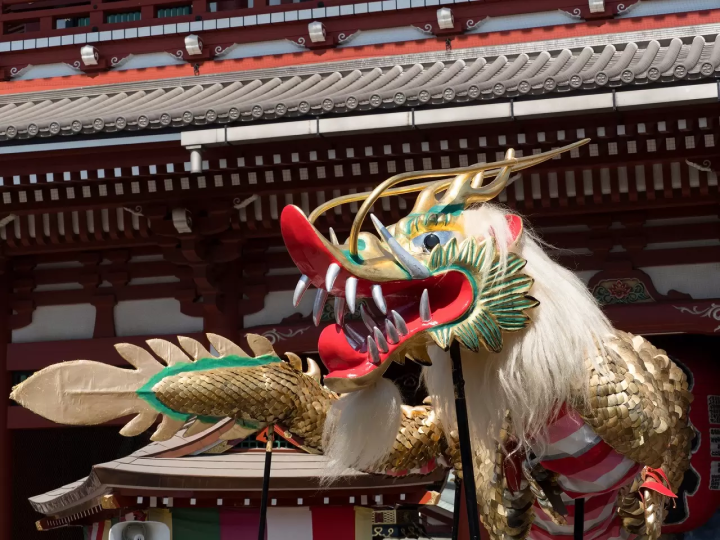
Photo by Pixta
In the heart of Tokyo's vibrant Asakusa district, a time-honored tradition unfolds, captivating the senses with its resplendent pageantry. Marking Sensoji's main hall founding date, the Asakusa Golden Dragon Dance is held every year in celebration of the deity enshrined at Sensoji Temple, Sho Kanzeon Boddhisatva, who embodies the mercy of all Buddhas.
According to legend, in 628, two fishermen found a statue of the deity in the waters of Sumida River; the hall where the statue was enshrined became the foundation of Sensoji Temple. Legend has it that the deity turned into a golden dragon soaring through the sky that protects the land from droughts and fire by bringing rain. This story stands at the origin of Sensoji Temple's official name, Kinryuzan, which translates to "The Temple of the Golden Dragon."
Visit Sensoji on March 18 and October 18 to witness the Golden Dragon Dance, or Kinryu no Mai. Dancing through the temple grounds and Asakusa's streets is an 18-meter-long golden dragon maneuvered by members of the local community.
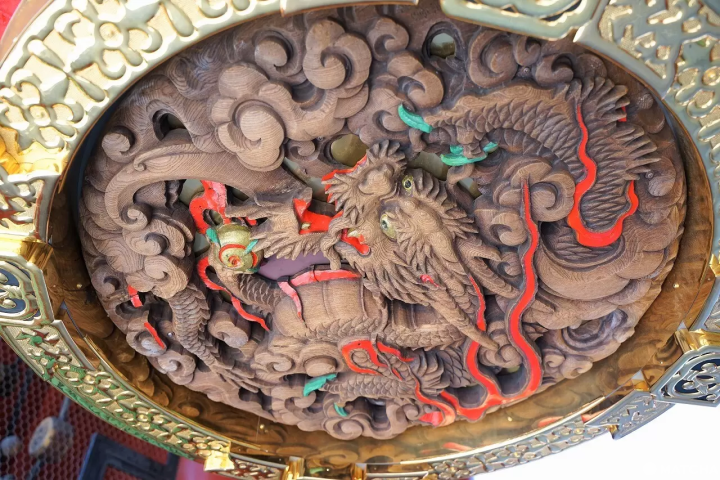
There are several dragon images and statues in the precincts of Sensoji Temple: the purification fountain, the painting on the ceiling above the entrance to the main hall, and the two Kinryu statues found on the back side of the Kaminarimon Gate are just some of them!
Often missed, a gigantic carved dragon with intricate details can be found under the iconic lantern at the Kaminarimon Gate! Next time you are in Asakusa don't forget to spot this beautiful dragon welcoming you to Sensoji Temple.
2. Ryujin Gorge and Ryujin Suspension Bridge in Ibaraki
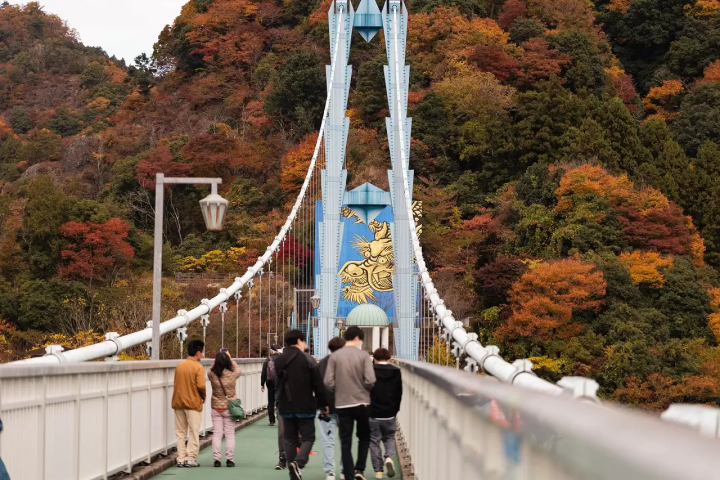
Photo by Pixta
The Ryujin Suspension Bridge is situated 100 meters above the Ryujin Gorge in Ibaraki's Hitachiota City. "Ryujin" translates to "dragon deity." At the origin of this name stands a legend about a dragon believed to be residing inside the river.
On each side of the bridge, there is an image of a golden dragon greeting visitors and guiding them safely across the bridge.
The 375-meter-long blue bridge offers stunning views of the area. It is particularly famous as Japan's second-highest bungee jumping spot. A great spot to experience the changing seasons, from lush green summers to colorful autumn foliage, the area around the Ryujin Suspension Bridge is perfect for enjoying fresh air and hiking in nature.
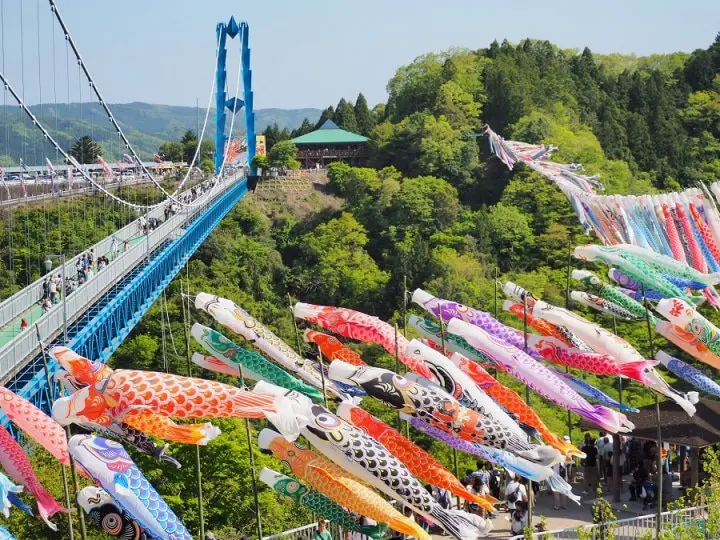
Photo by Pixta
Every year, one thousand colorful koi fish kites can be seen flying in the air around Children's Day (May 5) during the Ryujin Gorge Koinobori Festival.
3. Enoshima Island near Kamakura
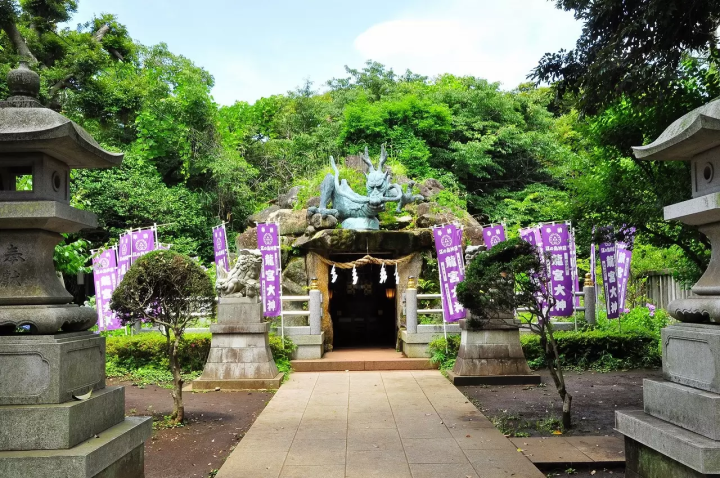
Photo by Pixta
Enoshima Island, located just an hour away from Tokyo, is well-known for its association with the legendary tale of the five-headed dragon, Gozuryu, and the goddess Benzaiten. The island is considered a hotspot for dragon-related attractions, featuring dragon shrines, caves, and statues.
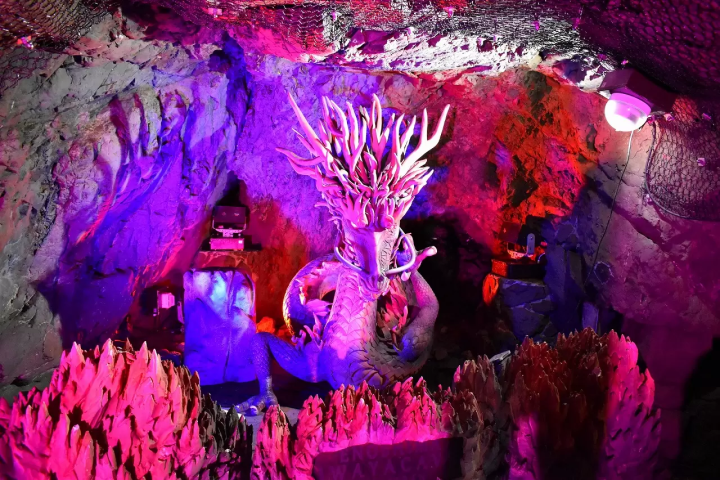
Photo by Pixta
According to the island's mythology, a destructive five-headed dragon named Gozuryu caused chaos in the Shonan area, wreaking havoc, spreading fire, destroying towns, and flooding villages for many years. The goddess Benzaiten intervened and captivated the dragon with her charm, leading him to fall in love with her. To prevent further destruction, Benzaiten created an island off the coast of Shonan and asked the dragon to protect it, along with Shonan and all its inhabitants. This act of devotion led to Gozuryu being enshrined on Enoshima, serving as a protector for visitors to the island.
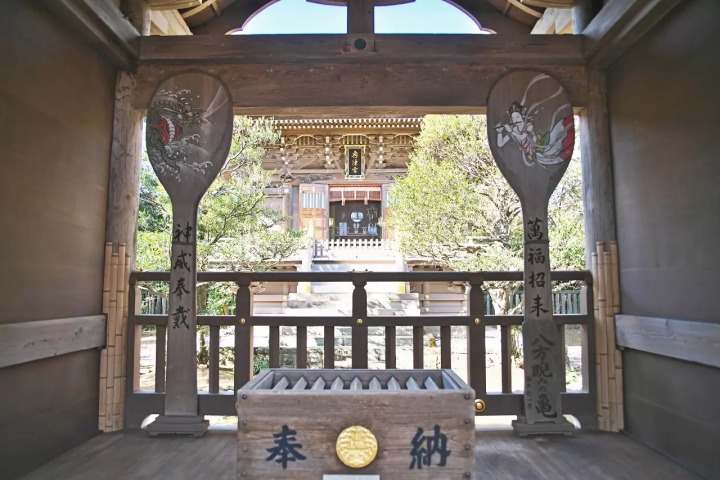
Photo by Pixta
Visitors can enjoy exploring the island and discovering various dragon motifs, such as the dragons carved on the Enoshima-ohashi Bridge and the impressive sculpture of the dragon deity guarding its shrine at Wadatsumi-no-miya Shrine.
Other notable dragon spots include the Enoshima Iwaya Cave and the dragon pond in front of Enoshima Shrine.
Hotels near Enoshima
4. The Roaring Dragon at Yakushido Hall, Nikko Toshogu Shrine
Nikko Toshogu Shrine is renowned for its structures adorned with intricate carvings. Dedicated to shogun Tokugawa Ieyasu (1543 - 1616), this UNESCO World Heritage Site attracts people from all over the world, showcasing stunning craftsmanship amidst natural surroundings.
A striking mural of a gold and black dragon embellishes the ceiling of the Yakushido Hall within the shrine's precincts. Notably, this special dragon is not only a sight to behold but can also be heard. The temple's construction provides impressive acoustics, so when guests clap, the resulting sound, resembling a rattlesnake's crackle known as "nakiryu" in Japanese, reverberates from wall to wall, said to echo the cry of a dragon.
Hotels near Yakushido Hall at Nikko Toshogu Shrine - Rinnoji Temple
5. Seitenkyu Temple, Saitama: The Holy Celestial Palace of 5,000 Soaring Dragons
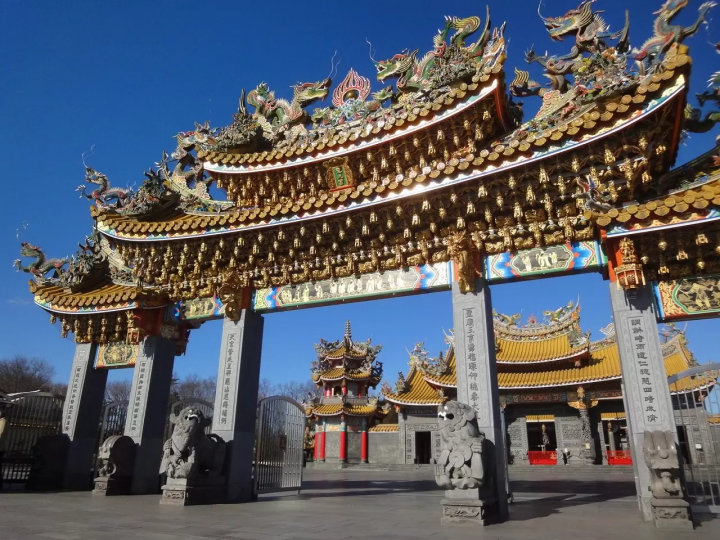
Photo by PR Times
In Sakado, a city in Saitama just north of Tokyo, you'll find the Seitenkyu Temple, also known as the Holy Celestial Palace of 5,000 Soaring Dragons.
This temple stands out due to its intricate design and vibrant Taiwanese architecture. It was designed by Kou Koku-Ten, a former businessman who became a Taoist priest. The surprising reason behind the temple's construction stems from Kou Koku-Ten's personal experience. After falling seriously ill, he prayed to three Taoist gods for seven years and made a miraculous recovery. In gratitude, he established the temple as a dedication to these gods.
The temple, a grand golden structure, is adorned with 5,000 dragon sculptures and various other animals, all crafted by local Taiwanese artisans. With most materials sourced from Taiwan, the interiors are adorned with colorful art murals depicting ancient Chinese tales, primarily in royal colors like red and gold.
As the largest Taoist temple in Japan, it spans an impressive 26,000 square meters of land and has been used for diverse purposes, including as a backdrop for films, cosplay photo shoots, and Tai Chi practices. It's a place where one can pay respects, appreciate Taiwanese craftsmanship, and marvel at the presence of thousands of dragons.
Hotels near Seitenkyū Temple
6. Shinshu Miyota Ryujin Festival (Nagano)
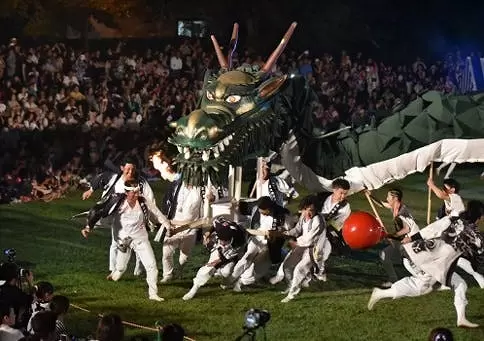
Photo by PR Times
Deep in the cedar woods of Shinrakuji Temple in Nagano, an annual event called the Ryujin Festival unfolds. This festival is dedicated to the legend of Ryujin Saburo, recounting the tale of two lovers separated by envy and tragedy.
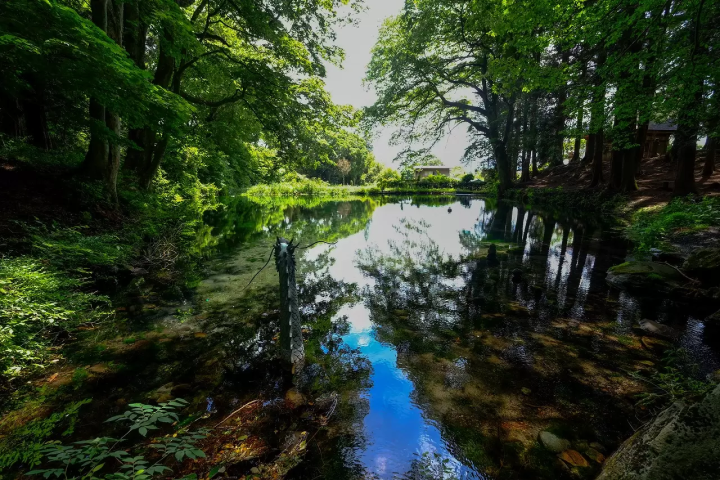
Photo by Pixta
According to the legend, Saburo, the protagonist, enters another world after being separated from his beloved by his envious brothers. As he desperately seeks his way back, he emerges from Shinrakuji’s Onuma Pond as a dragon, and learns that his lover, a princess, has also transformed into a dragon in her own desperate search for him. Reunited as dragons, they now live eternally. Each June, the town of Miyota celebrates this legend.
The festival begins at Shinrakuji Temple's main hall with a dragon's eye-opening ceremony, where drums awaken the two coiled dragons. They then make their way through the temple grounds to the pond where Saburo rose from, putting on a spirited display with splashing, smoke, and fire-breathing.
Visitors can witness this local legend unfold in an ancient forest surrounded by 1,000-year-old cedar trees. As the event progresses, attendees also have the chance to participate in carrying the enormous dragons. The male dragon, measuring 45 meters, is carried by 50 men each year, while the female dragon, measuring 30 meters, is carried by the women of the town.
Following the initial ceremony at the shrine, the dragons proceed to Ryujin-no-Mori Park in the town. Here, the celebrations continue through the night, featuring captivating displays of the dragons dancing and moving through the park accompanied by music and the cheers of the crowd.
Hotels near Shinrakuji Temple
7. Enshu Hamakita Flying Dragon Festival (Hamamatsu)
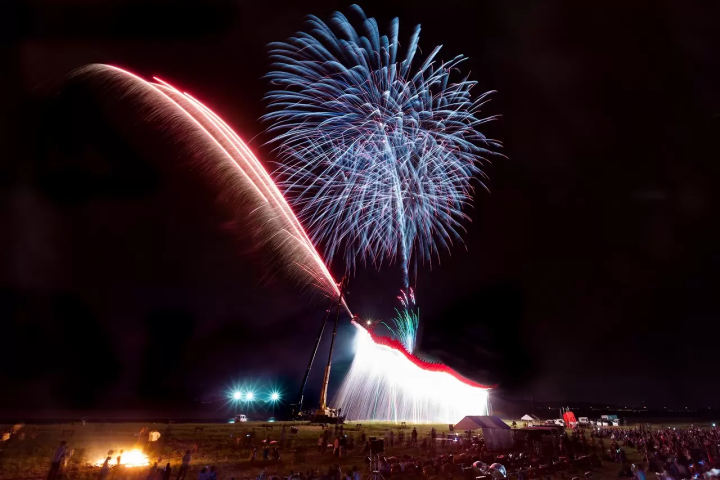
Photo by Pixta
The Enshu Hamakita Flying Dragon Festival takes place annually in late May or late June on the banks of Tenryu River in the Hamakita district of Hamamatsu city.
At the Nakazeryokuchi site, the festival's iconic flying dragon takes to the sky and concludes with a spectacular Niagara firework, stirring excitement among the audience. Throughout the event, various activities are held, including the Hamakita kite flying, where large kites measuring 3.2 meters by 2.4 meters soar to the skies.
With its blend of art, culture, and tradition, the Enshu Flying Dragon Festival leaves a lasting impression, evoking a sense of wonder for all who are fortunate enough to witness the mesmerizing dance of the dragon kite. The festival culminates in a spectacular display of fireworks as the Enshu flying dragon graces the sky, leaving an unforgettable trail of sparks for all onlookers to behold.
For festival details, please visit the official Hamamatsu tourism website.
8. Kenninji Temple (Kyoto)
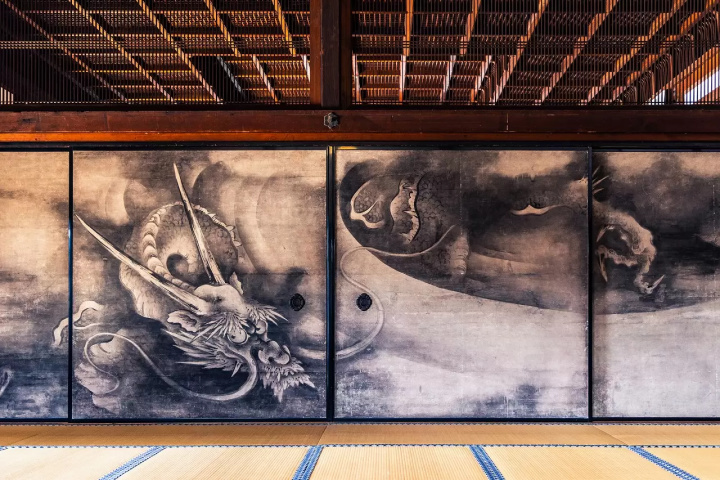
Photo by Pixta
Kenninji Temple is situated in central Kyoto, just a short 13-minute walk from the lively Nishiki Market. The temple offers a tranquil escape with a secluded Zen garden, providing a peaceful contrast to the bustling streets of Kyoto.
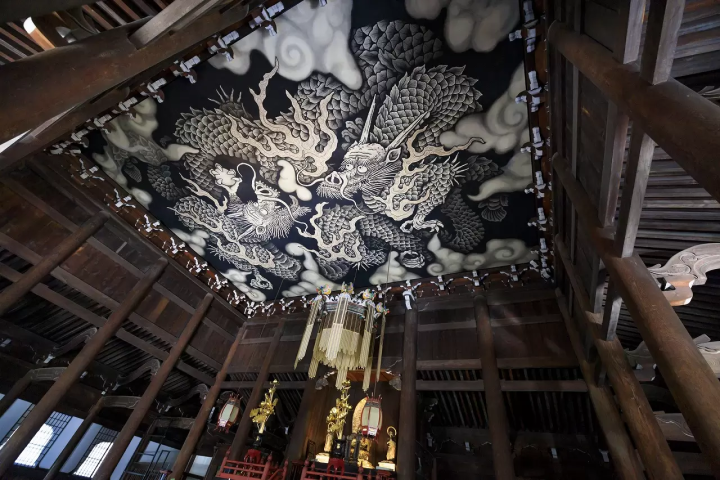
Photo by Pixta
The temple is home to several notable artworks, with three standing out. Among them, two awe-inspiring dragons steal the spotlight. A remarkable ceiling mural featuring twin dragons, created in recent years to commemorate the temple's 800th anniversary, graces the main hall. Painted in black ink on Japanese paper, the dragons swirl amidst clouds, capturing the attention of all who visit.
Another cherished artwork is a folding screen depicting Rajin and Fujin, the Japanese gods of thunder and wind, housed in the Kyoto National Museum. Lastly, dark swirling dragons adorn the sliding doors of the temple's tatami rooms, creating an impression of guarding the temple grounds.
Hotels near Kenninji Temple
9. Tenryuji Temple (Kyoto)
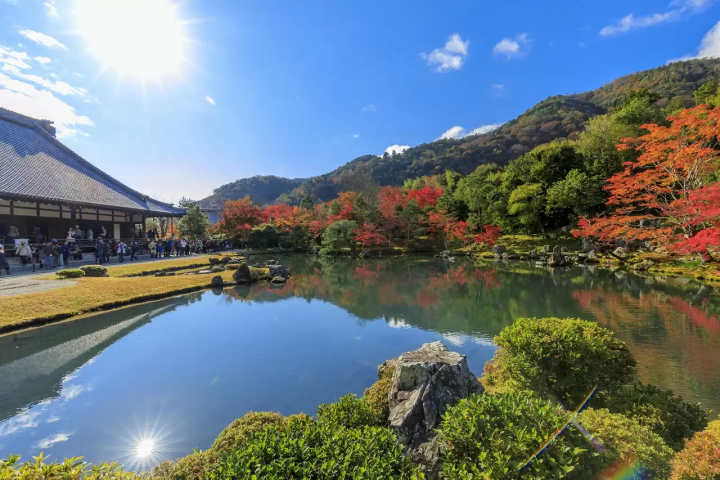
Photo by Pixta
Located in the Arashiyama district on the west side of Kyoto, Tenryuji Temple is a renowned World Heritage site celebrated for its serene Japanese Zen gardens, and it holds the distinction of being one of Kyoto's prominent Zen temples.
Originating in the 14th century and commissioned by the shogun Ashikaga Takauji (1305 - 1358) to honor the late Emperor Go-Daigo, Tenryuji has faced numerous calamities, including fires and wars, throughout its existence. Miraculously, its tranquil gardens have remained unscathed despite the turmoil that has unfolded in Kyoto over the centuries.

©JNTO
For enthusiasts of dragon lore, Tenryuji is a must-visit! The Hatto Hall features the monumental Cloud Dragon (Unryu) painting on its ceiling completed in 1997 by Nihonga artist Kayama Matazo (1927-2004). The eyes of the dragon are designed in the happo nirami style, in which they seem to be looking back at the viewer from every angle.
The Cloud Dragon painting can be viewed only on weekends and holidays. For more information, please refer to the official website of Tenryuji Temple.
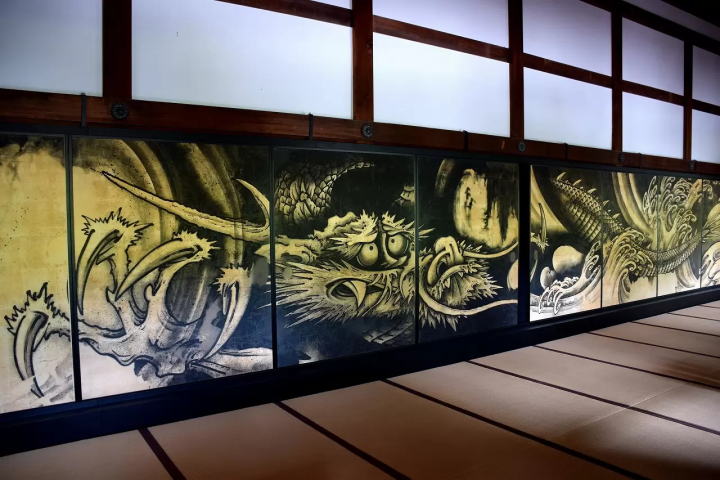
Photo by Pixta
Another striking dragon graces the temple's grounds, depicted in gold and black on the sliding doors of the Ohojo Hall as it emerges from crashing waves with its claws extended.
Adorned with beautiful weeping cherry blossoms during spring and featuring stunning gardens, Tenryuji is a must-see, especially for those making their way to the famous Arashiyama bamboo grove.
Hotels near Tenryuji Temple
10. Kiyomizudera Temple Seiryu-e Dragon Festival (Kyoto)
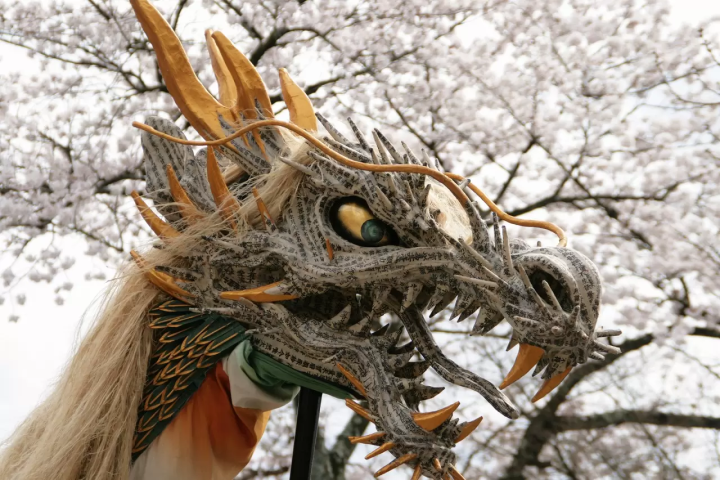
Photo by Pixta
The Kiyomizudera Temple Seiryu-e Dragon Festival pays homage to Seiryu, a dragon deity believed to influence bountiful rains and prosperity. Seiryu is considered to be an embodiment of the spirit of the goddess Kannon. According to legend, Seiryu replenishes itself from the Otowa no Taki waterfall each night.
Established in the year 2000 to honor Seiryu, the festival features an impressive 18-meter dancing dragon along with a diverse array of performers adorned in stunning costumes who parade through the temple grounds.
The Seiryu-e Dragon Festival is held every year on March 15, April 3, and September 15. The parade takes place from around 14:00 to 15:30 in the temple precincts.
The festival enchants visitors, transporting them to a realm where ancient rituals, prayers for prosperity, and vibrant Japanese artistry converge. The dragon's presence infuses the surroundings with an aura of protection, wisdom, and good fortune, imbuing the air with a sense of magic. For details on the event, please visit the official website of Kiyomizudera Temple.
Hotels near Kiyomizudera Temple
11. Koji Kinutani Tenku Art Museum, Umeda Sky Building (Osaka)
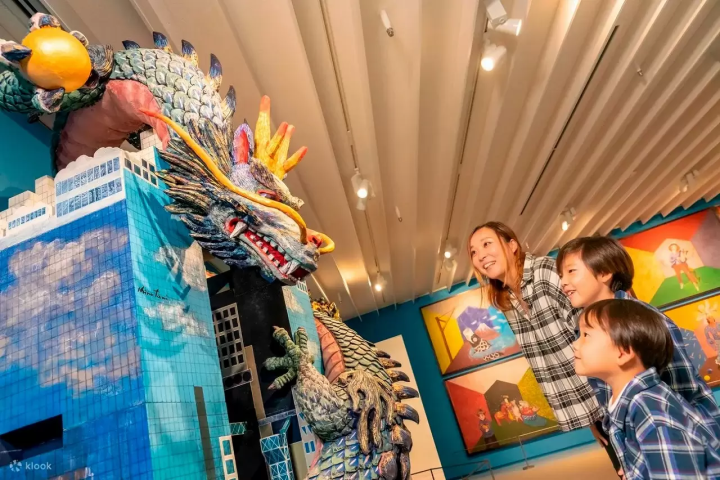
Photo courtesy of Klook
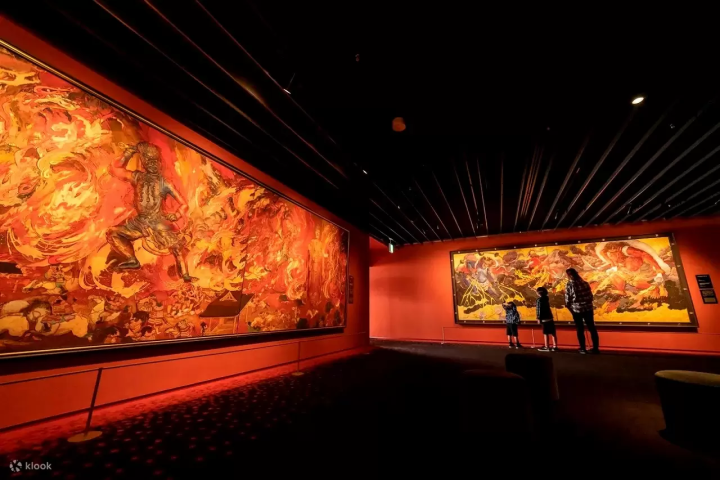
Photo courtesy of Klook
The Koji Kinutani Tenku Art Museum is located on the 27th floor of the Umeda Sky Building, which offers great views of Osaka City.
The museum features work by Koji Kinutani: vibrant fresco murals portraying vivid and contrasting scenes drawing from his experiences in Japan and Italy. His art encompasses scenes from Japanese mythology, including clashes among deities amidst stormy clouds, juxtaposed with serene blue skies and Venetian architecture.
The artist integrates numerous depictions of majestic flying dragons within Japanese landmarks like Mount Fuji and the Umeda Sky Building. These are brought to life through painted murals and 3D sculptures. Furthermore, the exhibition offers a captivating 3D experience, enabling visitors to witness paintings spring to life through the use of 3D glasses.
12. Kinryu Ramen (Osaka)
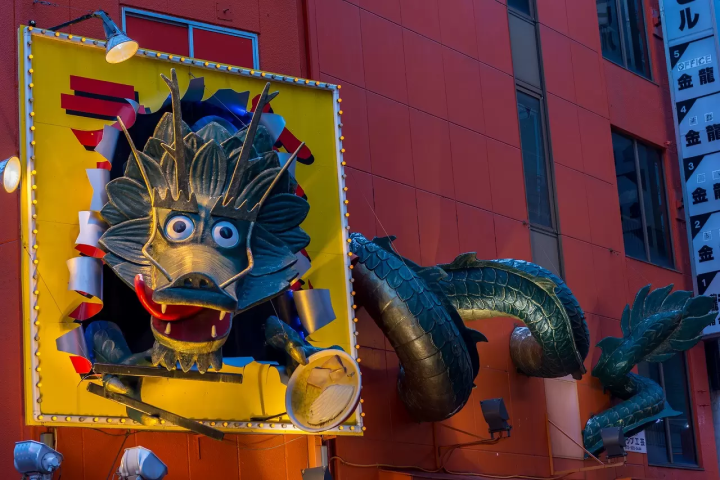
Photo by Pixta
Easily identifiable by its striking golden dragon sign, the Kinryu Ramen chain store is a standout feature along the vibrant streets of Dontonbori.
The dragon emblem at Kinryu Ramen represents more than just a logo; it distinguishes the shop as a place of excellence, luring in customers with the promise of an exceptional dining experience. As visitors walk beneath the captivating gaze of this dragon, seemingly yearning for more delicious ramen, the inviting aroma of rich broth and savory noodles fills the air, offering the promise of a deeply satisfying meal.
The combination of visual spectacle, culinary expertise, and cultural significance establishes Kinryu Ramen as a celebrated destination in Osaka, appealing to both locals and tourists seeking an extraordinary culinary adventure.
There are several Kinryu Ramen stores in the Dotombori area so pick the one that appeals to you most: Kinryu Ramen Dotombori, Kinryu Ramen Ebisubashisuji, or Kinryu Ramen Namba-sennichi-mae.
13. Kuzuryu Shrine, Hakone
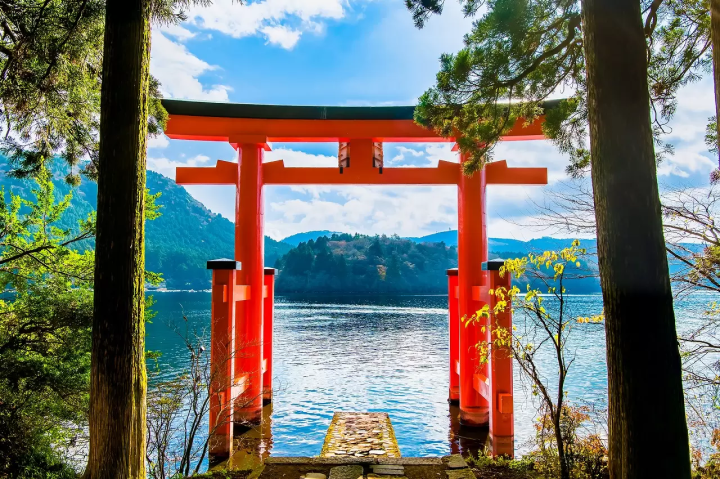
Photo by Pixta
Kuzuryu Shrine, better known as Hakone Shrine, with its iconic torii gate extending into Lake Ashi, is a popular destination cherished by travelers from around the globe.
Offering breathtaking views of Mt. Fuji overlooking a lush forest and sparkling lake, a visit to Hakone is a must and an accessible day trip from Tokyo. For those keen on capturing an Instagram-worthy image of the red torii gate standing prominently against the lake's waters while delving into the local legends of Hakone, this spot is a must-visit.
According to local lore, Hakone was once plagued by a nine-headed dragon dwelling within Lake Ashi. Fearing its wrath, desperate families offered their daughters to the beast in a bid for peace. Coming to the town's rescue, a priest named Mangan hurled a stone into the lake at the very spot where the red tori gate now stands, and commenced a three-day prayer. Shielded by local deities, the monk remained unscathed. Eventually, due to his unwavering resilience, the dragon relented, choosing to amend its ways and becoming enshrined at the Kuzuryu Shrine. The only condition was that the residents pay their respects to him once a month.
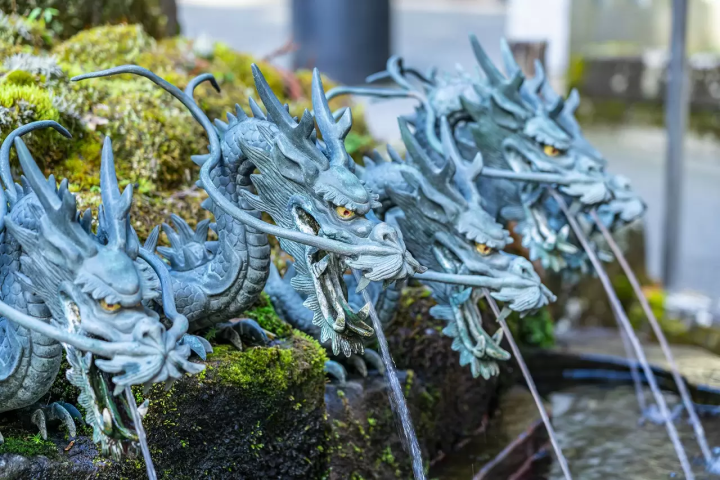
Photo by Pixta
Today, serving as a guardian of Hakone, many visit the shrine on the 13th of each month to honor the dragon's wishes during the Kuzuryu Shrine Festival. Upon arrival at the shrine, visitors are greeted by a nine-headed dragon fountain, with many coming here to pray for luck in love.
Hotels near Hakone Shrine
14. Nagasaki Kunchi Festival
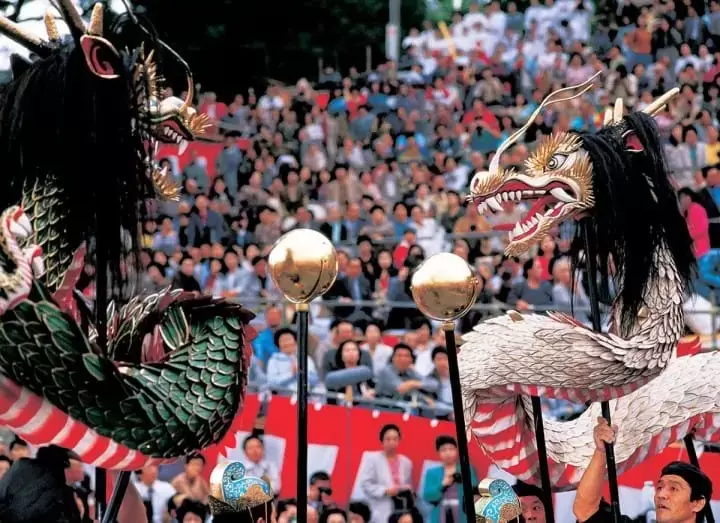
Photo from article Nagasaki Kunchi Festival: Schedule, Access, and Highlights
Nagasaki, a port city with a rich historical significance, has long played a role in connecting Japan with the world. Influenced by countries like the Netherlands, Portugal, and China, which brought art, technology, and architecture to Japan, Nagasaki is a thriving multicultural hub, retaining elements of its lively past and embracing Western influences.
The Nagasaki Kunchi Festival, recognized as an Important Intangible Folk Cultural Property by the Japanese government, is a key celebration that reveals the city's distinctive and enduring heritage. For the past four centuries, this lively event, held annually in autumn, has energized Nagasaki with colorful floats racing between various shrines, accompanied by the vibrant sounds of drums, flutes, and shamisen.
One of the festival's main attractions is the Jaodori (Dragon Dance) performance, a mesmerizing display where majestic dragons come alive to the sound of traditional Chinese instruments. These mythical creatures move in pursuit of a concealed golden orb, which, when revealed, sets off a dramatic and frantic display as the dragons swiftly twist and glide through the air in pursuit of the symbol.
Alongside the captivating dragon dance, the festival also features remarkable showcases including colossal boat floats, whale representations, drum dances, Dutch dances, and more. To delve deeper into the magnificence of this festival, take a look our detailed article below!
Explore Japan's Dragon Legends
We hope that the locations introduced above serve as an incentive for you to learn more about Japan's rich cultural traditions related to dragons
Assistant editor at MATCHA since 2023, Kate is a photographer who enjoys traveling Japan's hidden gems and adventuring off the beaten path. Living in Japan since 2018, she has traveled across different areas of Japan. From indulging in Aomori’s apple pies and fiery festivals to exploring the quaint charm of Nagasaki’s cat-filled streets she is always searching for new areas full of atmospheric beauty, festivals, and seasonal events to capture on camera.






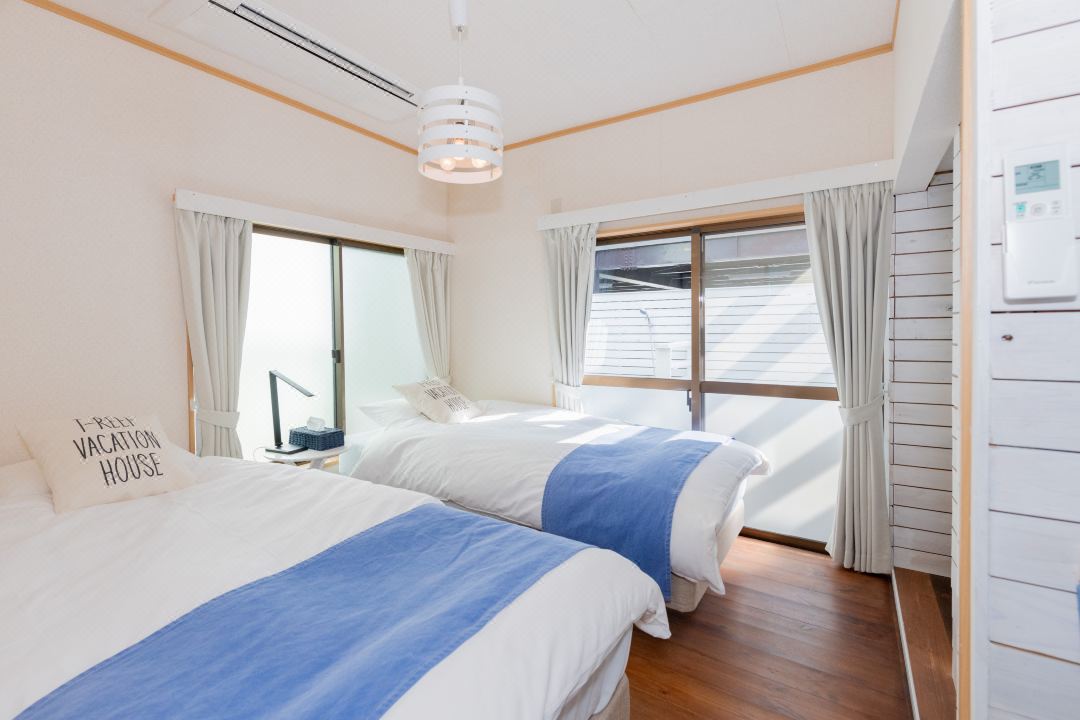


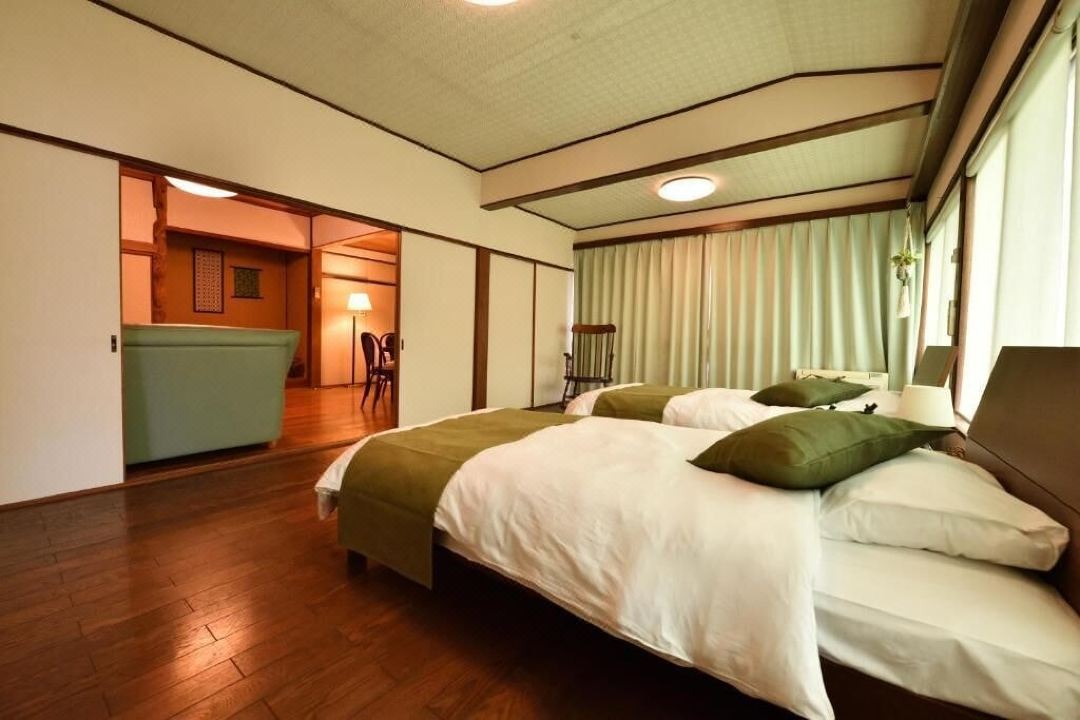


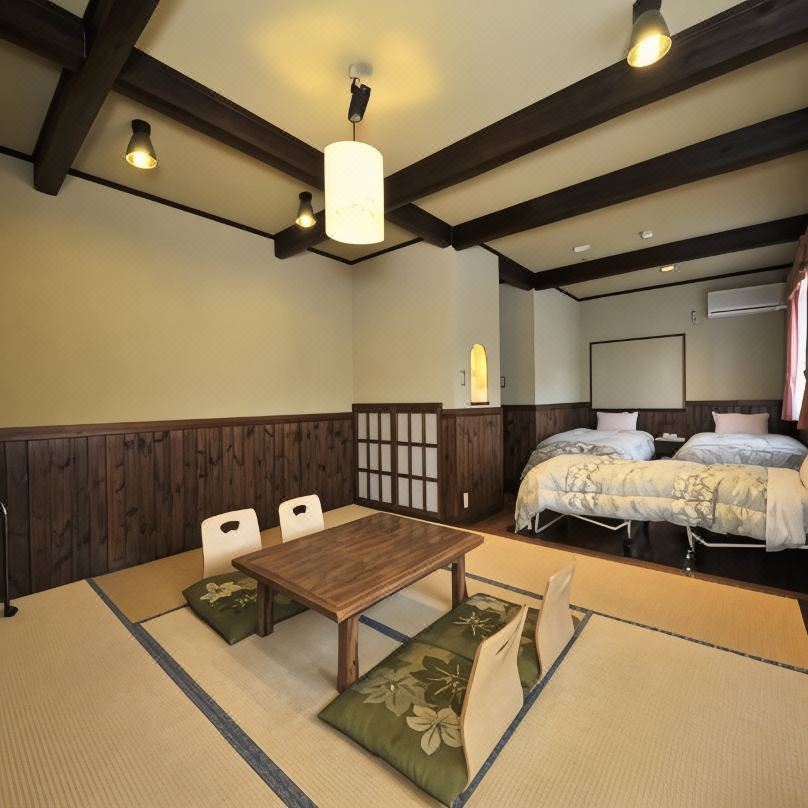
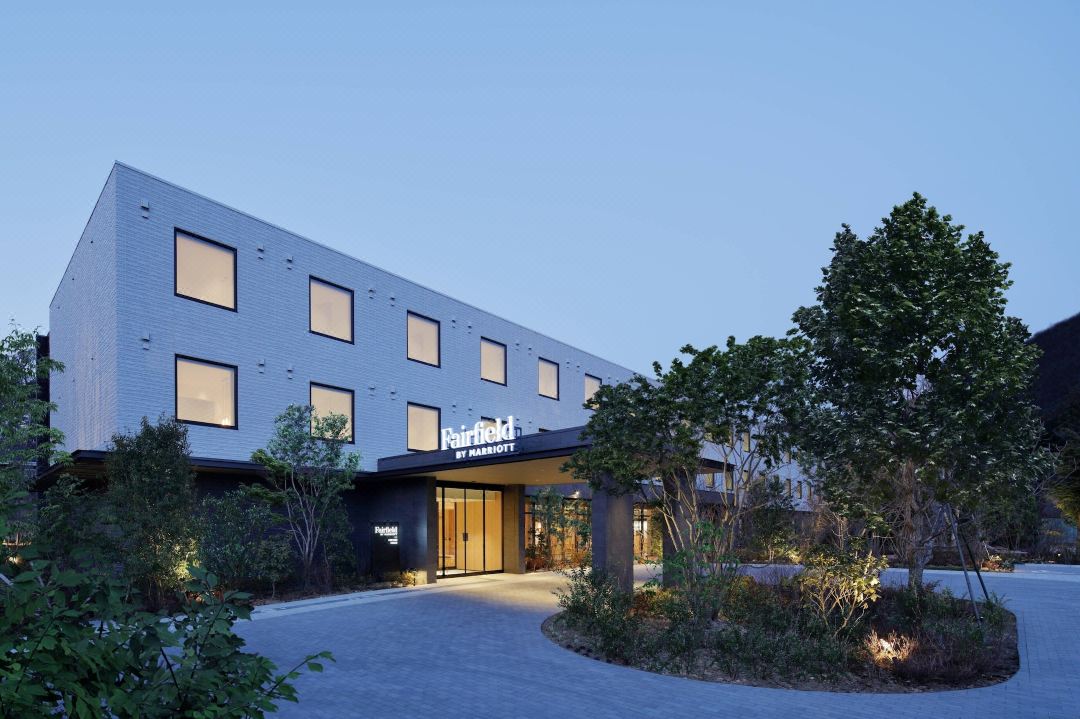
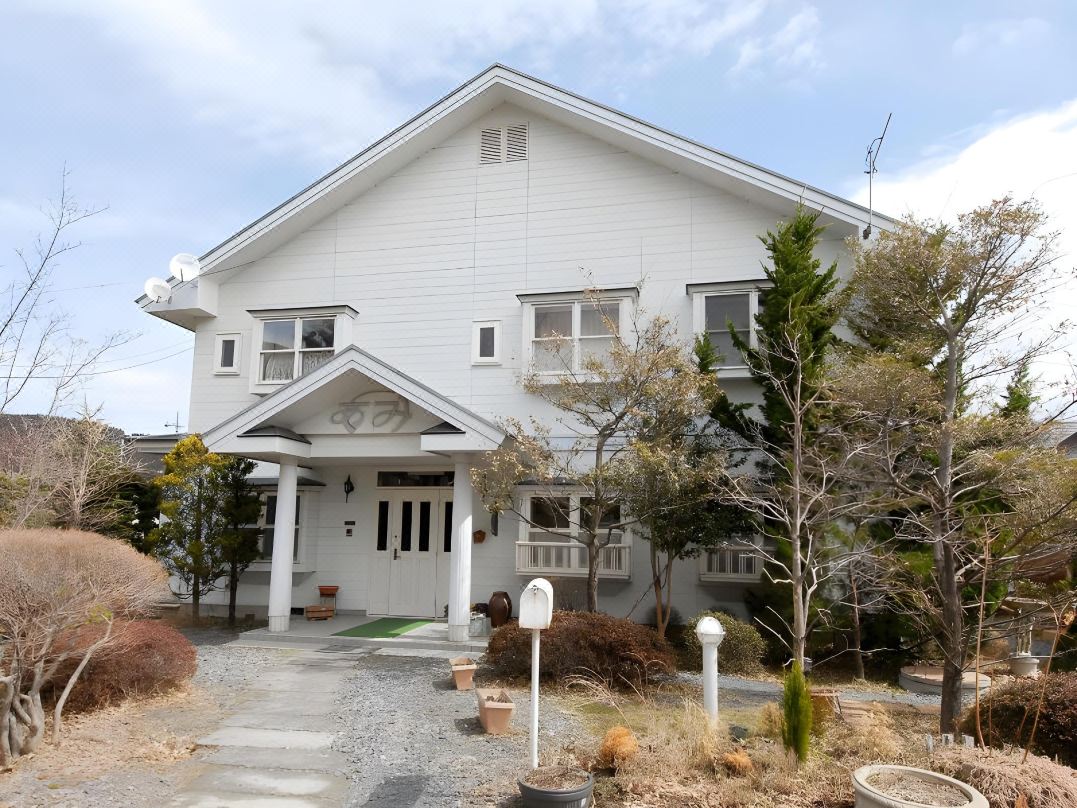

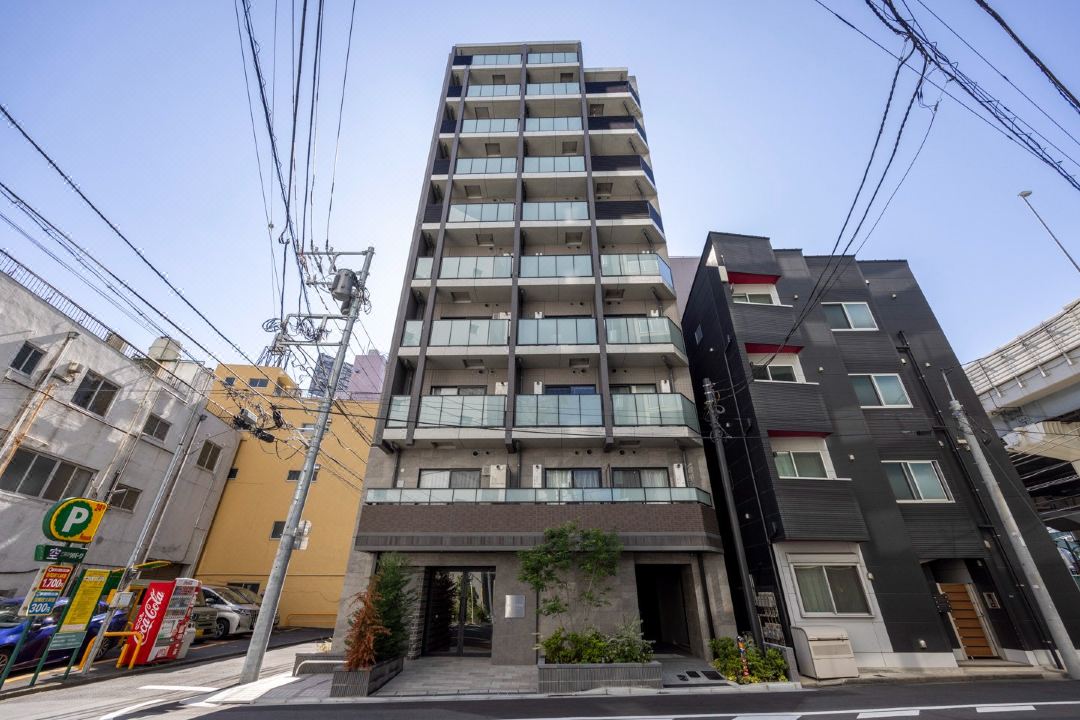
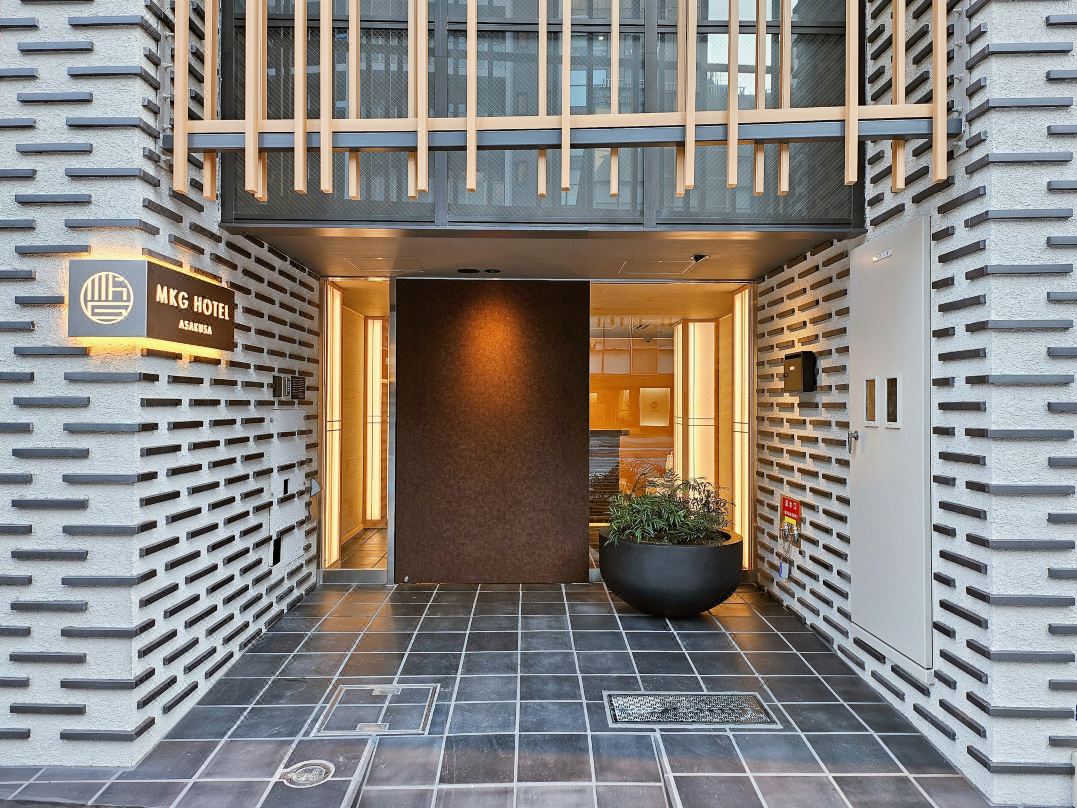
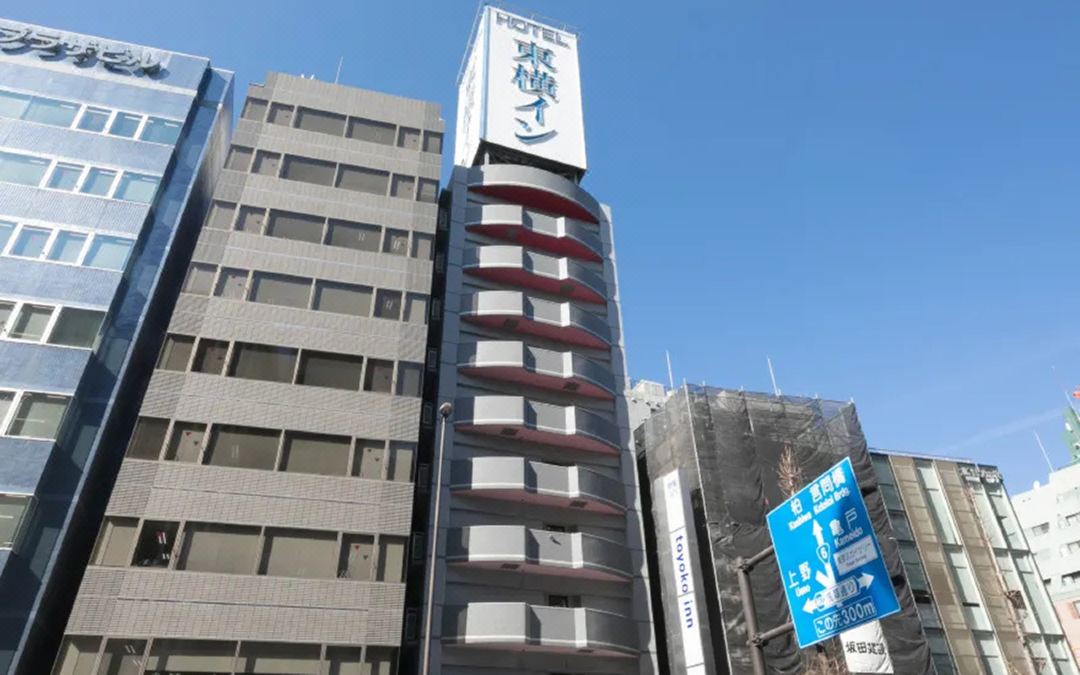

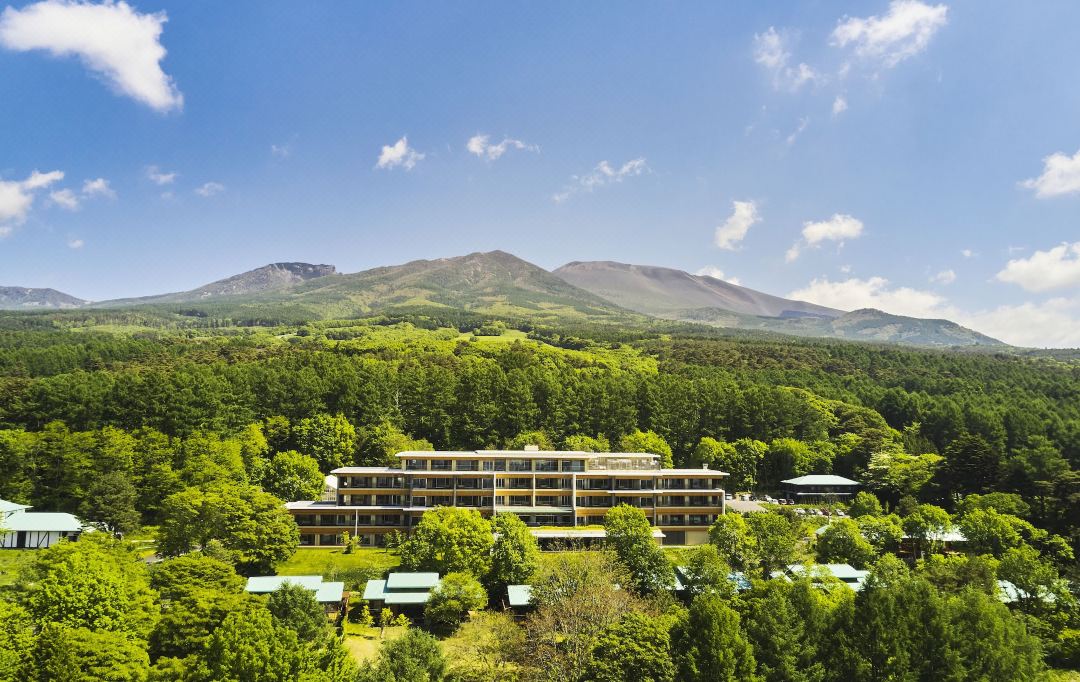






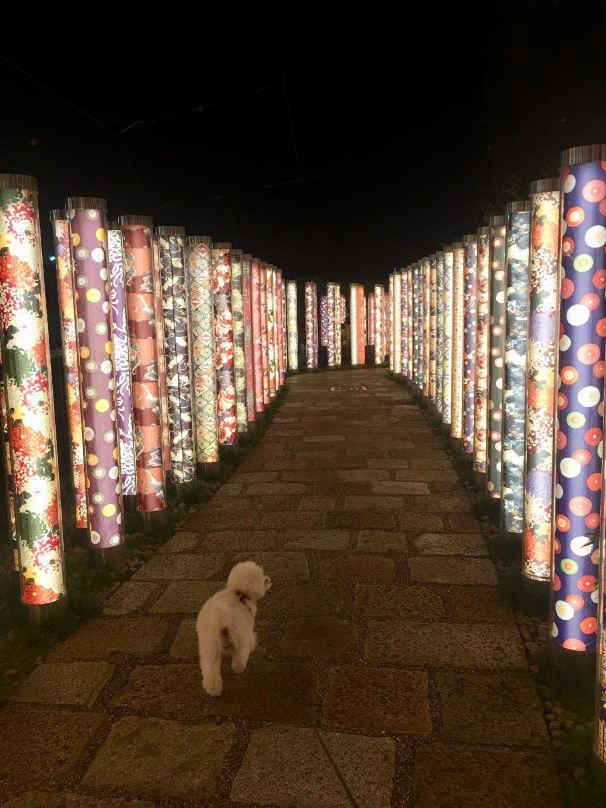

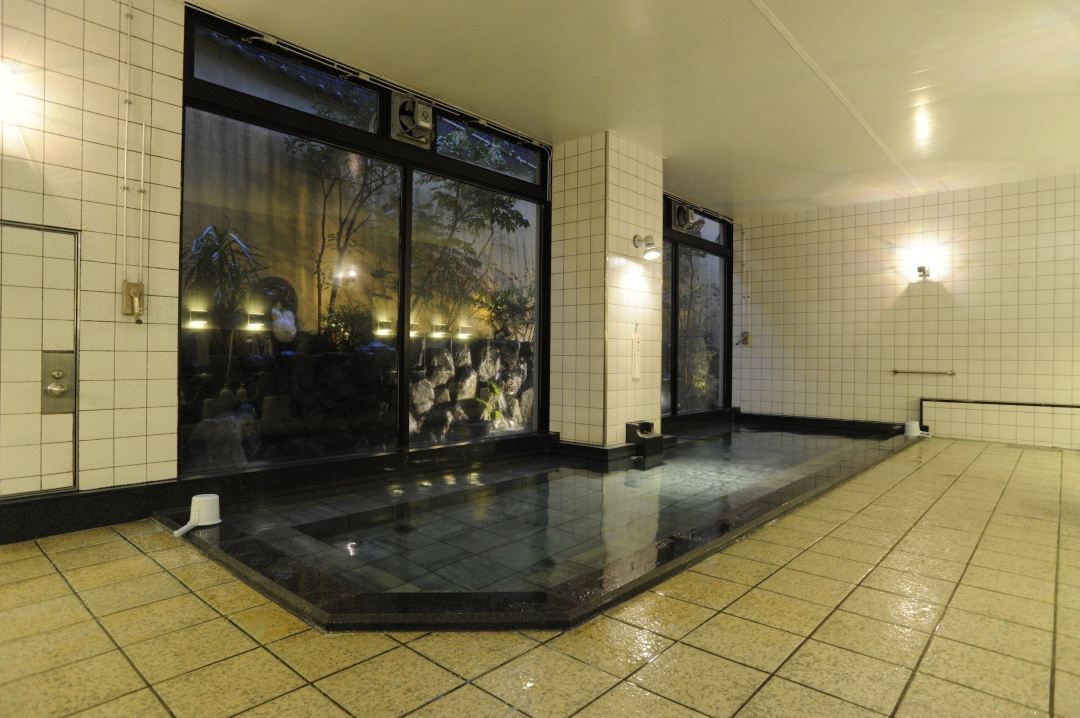


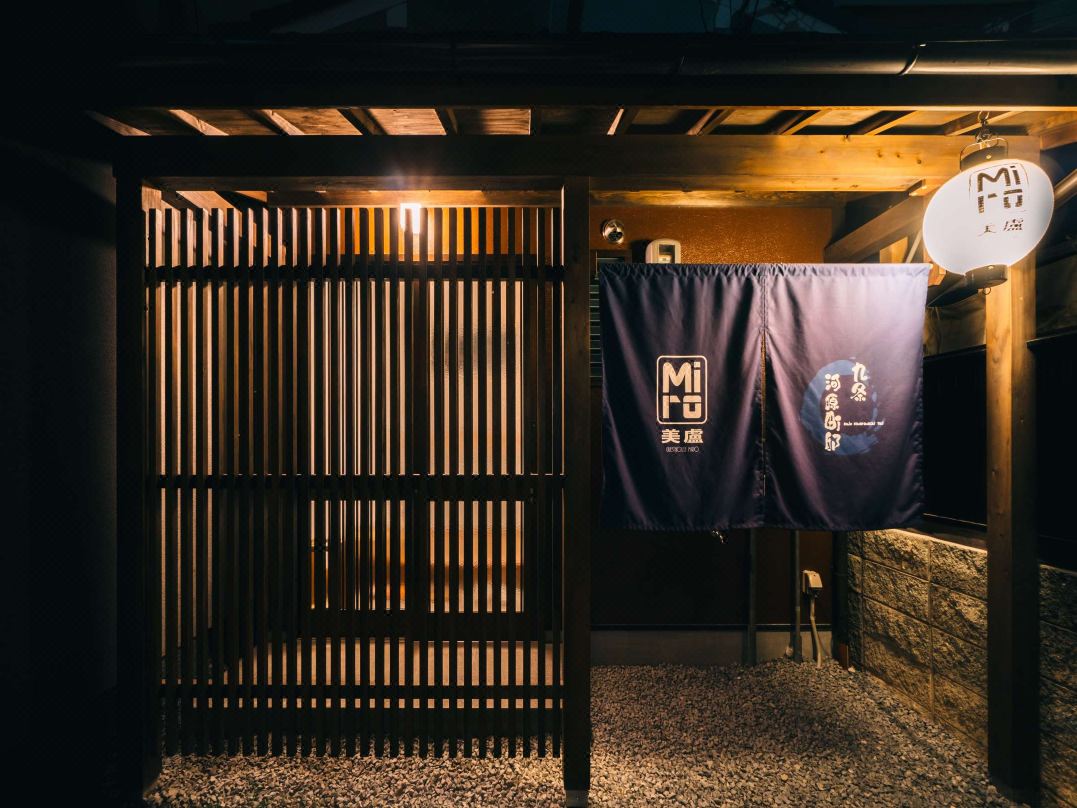
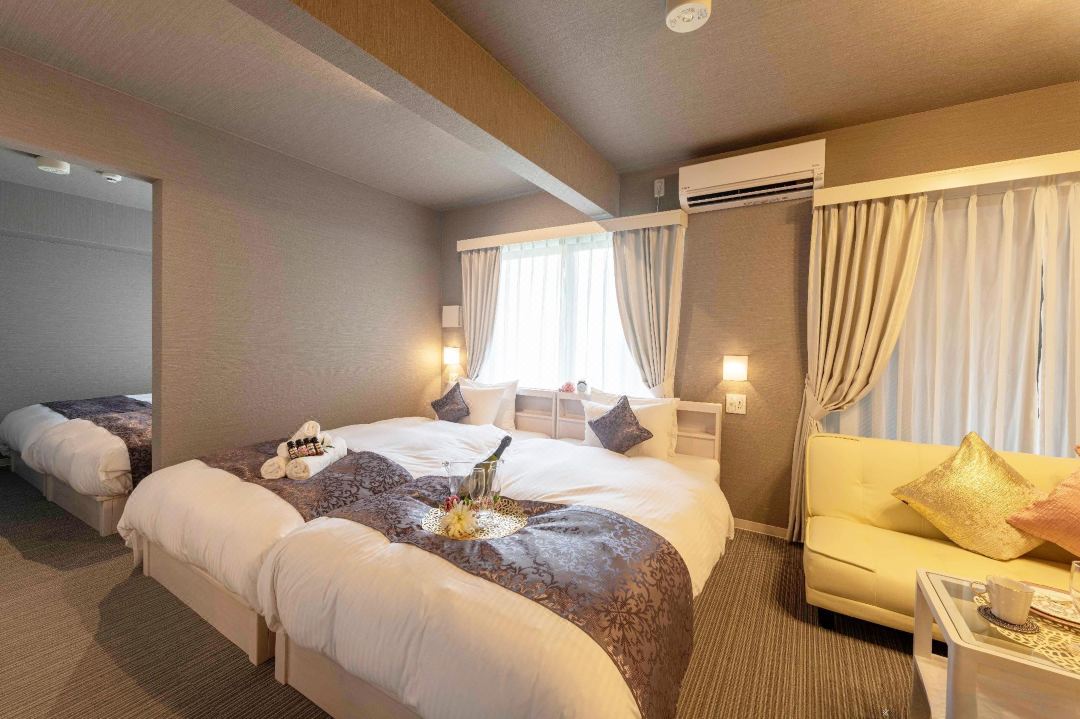
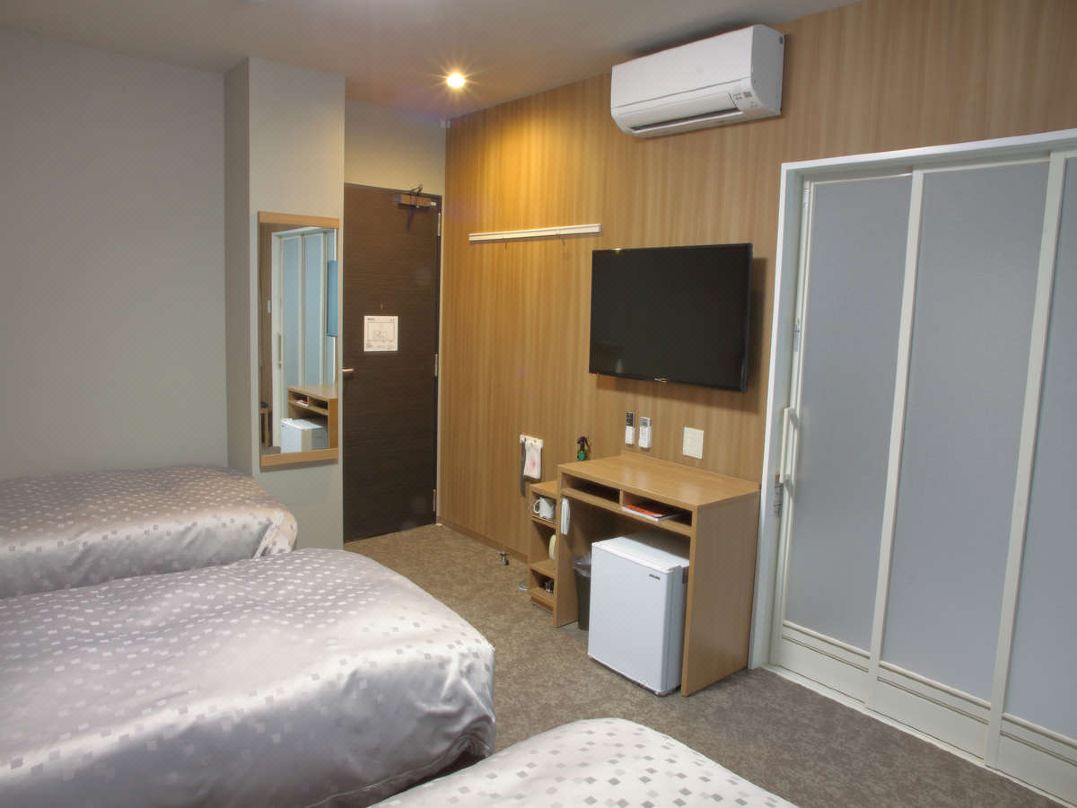


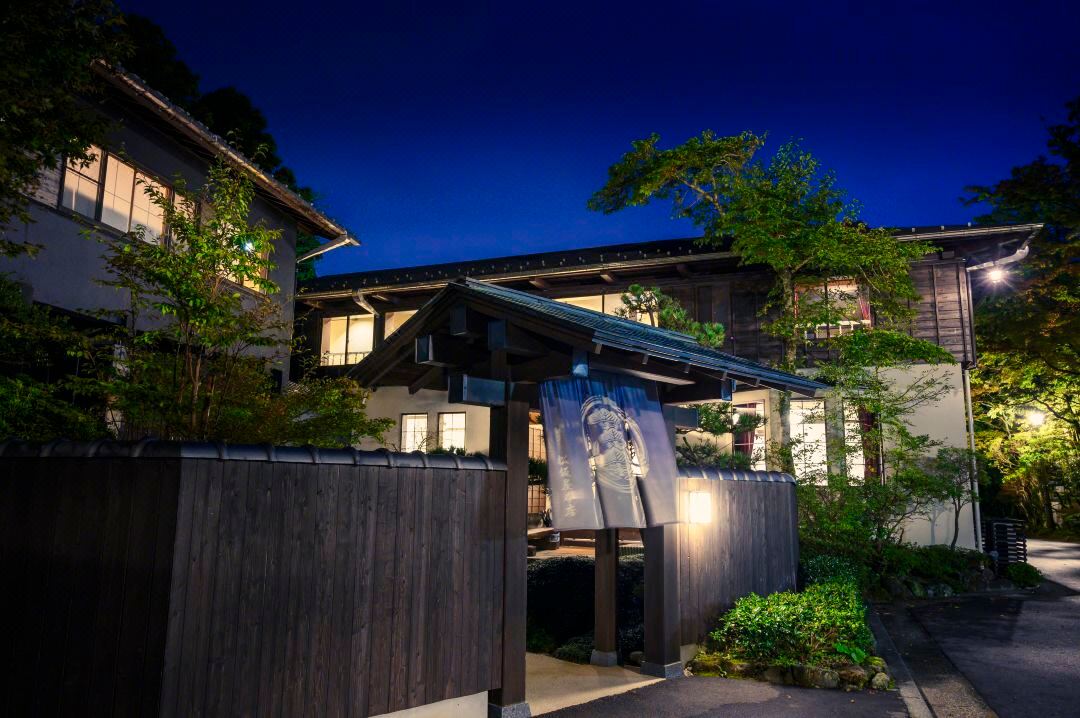
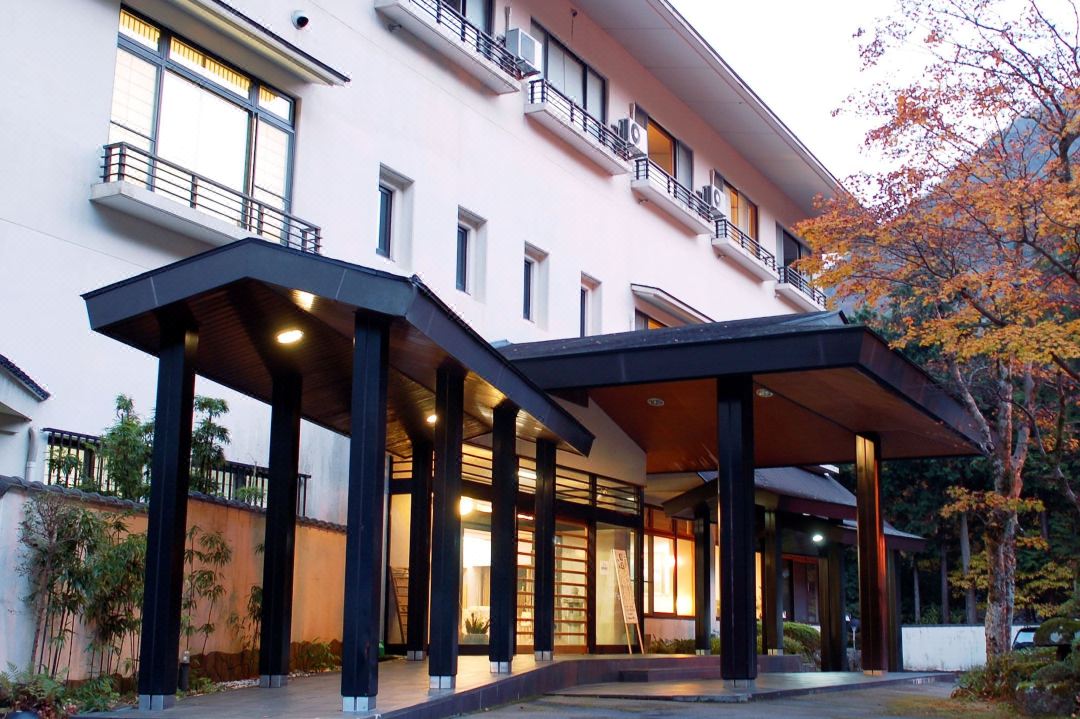
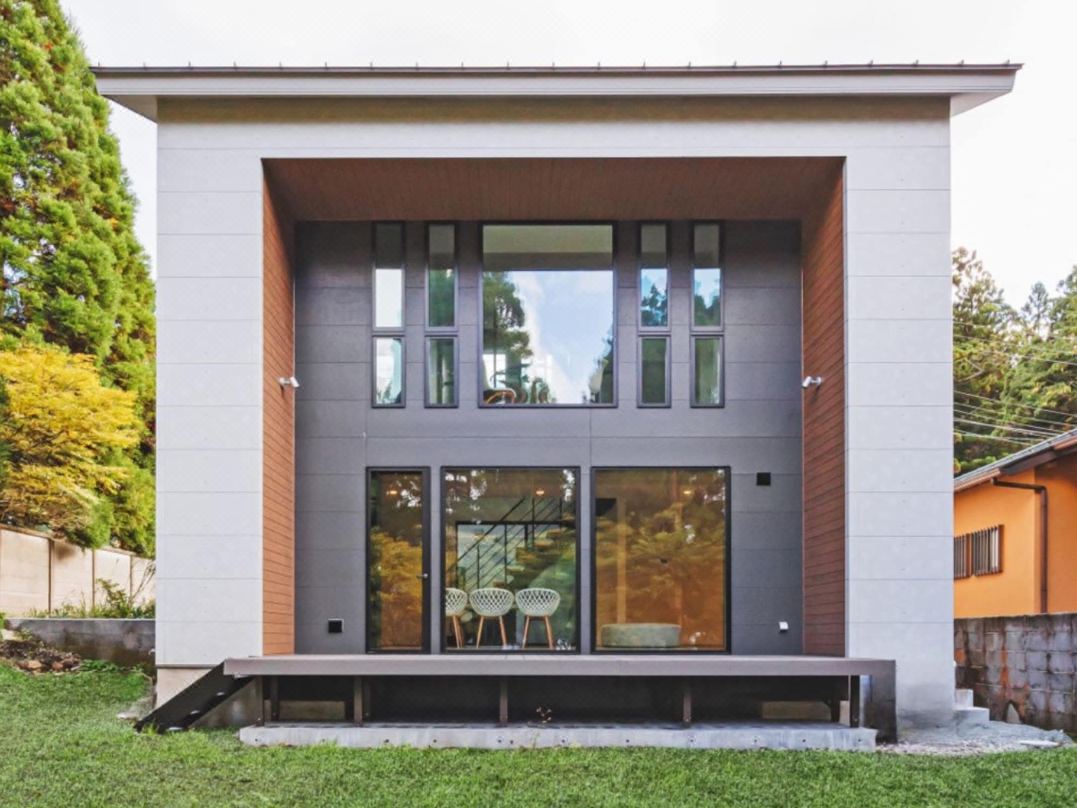


























![[Northern Okinawa] 4 Recommended Cosmos Fields in Okinawa | Sunflowers and Cherry Blossoms in the Same Season!](https://resources.matcha-jp.com/resize/720x2000/2024/08/12-192028.webp)



![[Corporate Visit List] Near Kansai Airport! Discover Japan’s Technology and Business Philosophy through Industrial Tourism](https://resources.matcha-jp.com/resize/720x2000/2024/12/13-215168.webp)